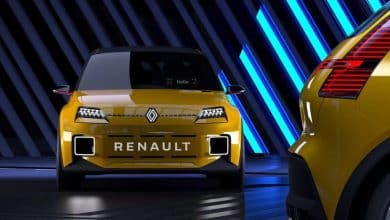The electric vehicle does not drink, does not smoke. And it makes no noise. For brands whose sound signature is part of the business, this poses a real problem and risks blurring their image.
Hearing the sound of wind and tires, as Rolls-Royce has done for more than a century, is always happening. But for Alfa Romeo, BMW, Lamborghini, whose identity is partly based on mechanical singing, it’s a whole different story. The sound of the engine gratifies the ear with various vocalizations. They cannot be inaudible. Even electrified. Part of their identity is based on this sound signature. Which, it must be said, is no longer as authentic as it once was.
Several devices skilfully developed by the acousticians modify or artificially amplify the sound of the exhaust to then diffuse it in the passenger compartment using the loudspeakers. Gone are the days when firing order shaped the voice of an engine. Today’s high-pitched, raspy or metallic sounds may deceive your hearing, but they’re still plausible due to the nature of the internal combustion engine. At least, that’s the conclusion many manufacturers have come to after creating some kind of dummy muffler aimed at recreating the sound of a classic car.
Compose the right symphony
To break the silence, but also to give emotion to (electric) power units that don’t have any, several brands are looking to recruit a new orchestra. The idea of reproducing – with your handkerchiefs, the nostalgic ones – the roar of heat engines does not really seem to be on the agenda.
Some OEMs at the SEMA Show in Las Vegas already had ideas in mind. Present in the gambling capital, the British firm Thor offered owners of Tesla, Polestar and other Rivians an electronic exhaust (from $2,200). Consumers can choose from 16 soundtracks (American V8 tumbled, of course), including one – brace yourself – aping the sound of fighter jet engines and another (we assume here) of a flying saucer. Don’t laugh, you can even get a synthesized rendition of Long live the wind. Therefore, Elon Musk’s idea of having his Teslas play elevator music seems less absurd.
Stopping at nothing, BMW enlisted the help of internationally renowned composer Hans Zimmer to create musical themes based on the operating mode selected by the driver.
Mercedes-Benz has done the same by retaining the services of the Linkin Park group for its electrified high performance vehicles (AMG). The Jaguar/Land Rover group turned to pianist David Levine.

PHOTO PROVIDED BY BMW AG
Hans Zimmer (left) composed the “sound” of BMW’s electrified vehicles.
Not all manufacturers go this route, however, and some prefer to rely on their in-house specialists to create THE sound that will characterize them in the future. This is particularly the case of Maserati. Its president, Davide Grasso, told The Press last August: “It took more than 18 months to find the sound identity of our future electrified products. The bar was set high and the expectations of our traditional customers high. We will not disappoint them. »
Pay for his sound
Sound design, as the automotive industry likes to call it, opens the door to a new revenue stream, where sounds would be offered for a fee, like custom ringtones offered on your cell phone. The general cacophony is at the end of the street. Legislators are sure to intervene, if necessary. As they have already done to ensure that the automobile, even electric, does not remain silent.
The European Union as well as the United States (Canada counts for so little, you know) require electric and hybrid vehicles to emit artificial sound. This must be audible (maximum 75 decibels) when the vehicle is traveling at less than 20 km/h or when maneuvering in reverse. This measure aims to protect other road users, who are often more vulnerable (pedestrians, cyclists). Additional noise pollution no doubt, but essential.











